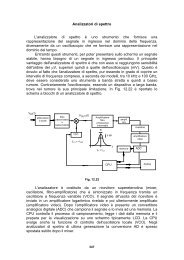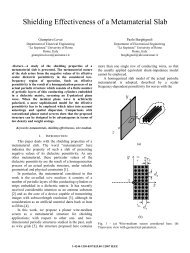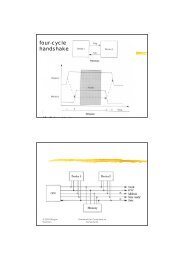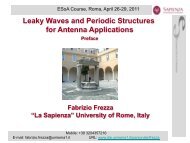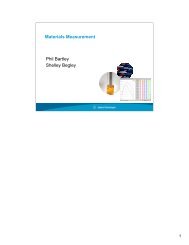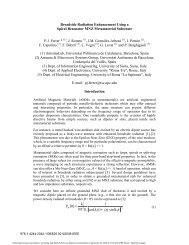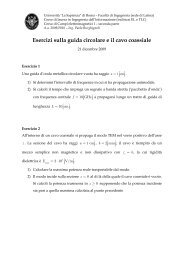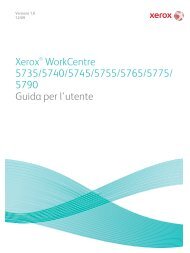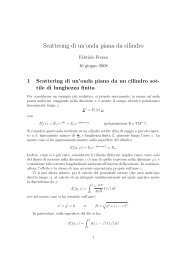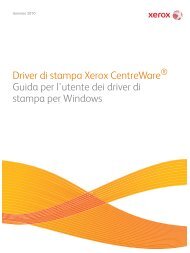Introduction to Traveling-Wave antennas.pdf
Introduction to Traveling-Wave antennas.pdf
Introduction to Traveling-Wave antennas.pdf
Create successful ePaper yourself
Turn your PDF publications into a flip-book with our unique Google optimized e-Paper software.
6 <strong>Introduction</strong> <strong>to</strong> TWAFigure 5: Groove guidestub is moved, and α varies over a very large range. This feature allows <strong>to</strong> taper theantenna aperture <strong>to</strong> control sidelobes. The fact that the L-shaped structure stronglyleaks may also be related <strong>to</strong> another leakage mechanism: the use of leaky highermodes. In particular, it may be found that all the groove-guide higher modes areleaky. For example, let us consider the first higher antisymmetric mode. Becauseof the symmetry of the structure and the directions of the electric-field lines, thestructure can be bisected twice <strong>to</strong> yield the L-shaped.Figure 6: Sketches showing the transition from the T E 20 mode in the full grooveguide, on the left, <strong>to</strong> the L-shaped antenna structure on the right. The transitioninvolves two successive bisections, neither of which disturb the field distribution. Thearrows represent electric field directions.The antenna may be analyzed using a transverse equivalent network based on aT-junction network. The expressions for the network elements are in simple closedforms and yet are very accurate.Usually, the stub length needs only <strong>to</strong> be about a half wavelength or less if the stubis narrow. To exploit the possibility of printed-circuit techniques, a printed-circuitversion of the previous structure has been developed. In this way the fabricationprocess could make use of pho<strong>to</strong>lithography, and the taper design for sidelobe controlcould be handled au<strong>to</strong>matically in the fabrication. The transverse equivalent networkfor this new antenna structure is slightly more complicated than the previous, andthe expressions for the network elements must be modified appropriately <strong>to</strong> takeEuropean School of Antennas




